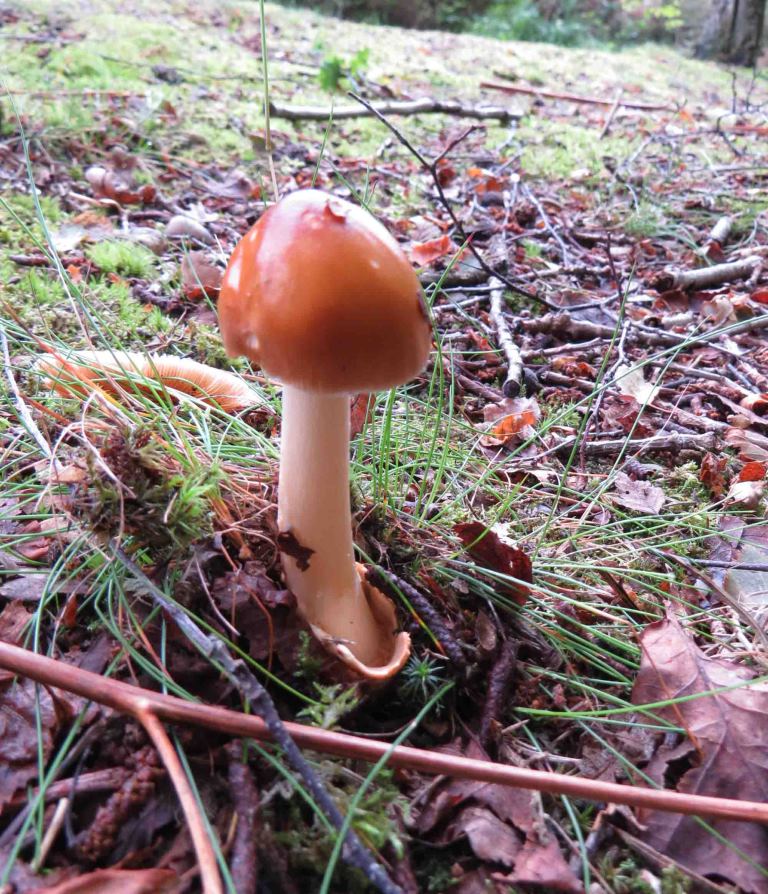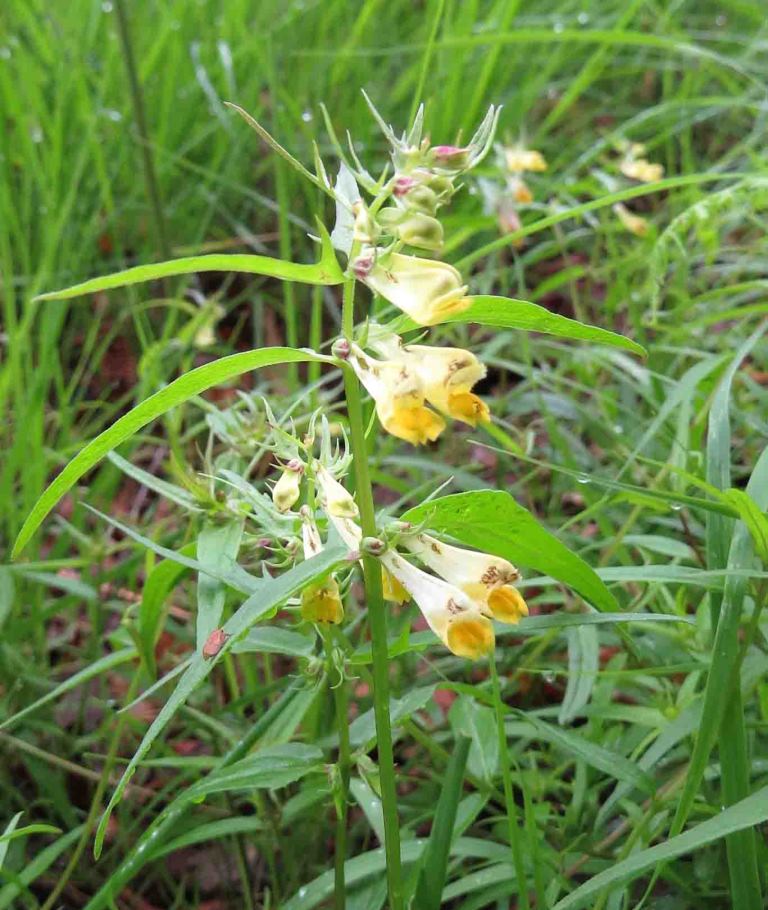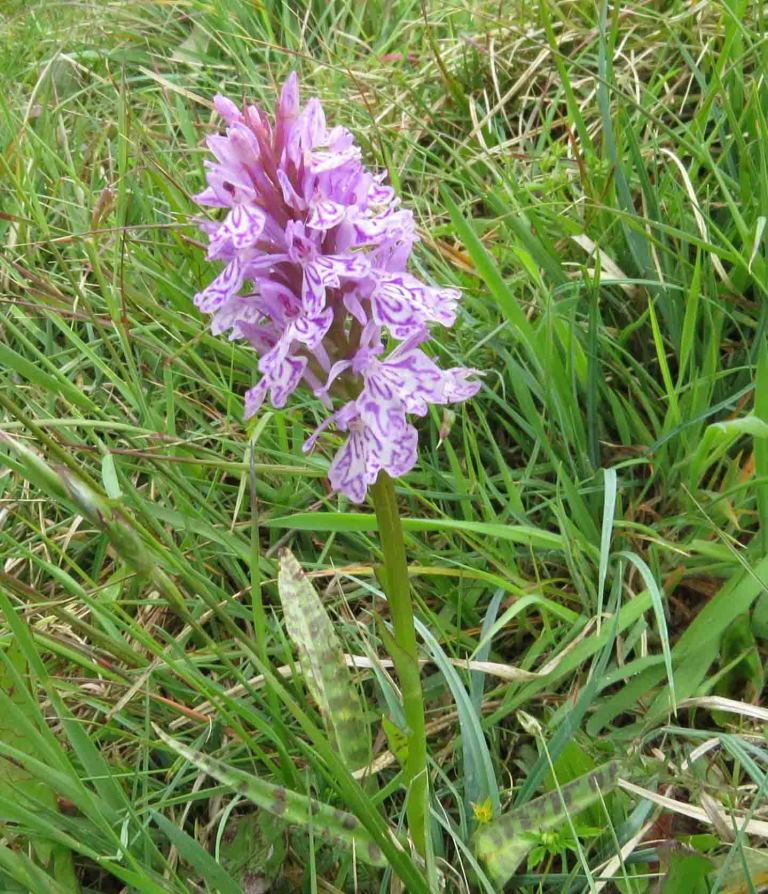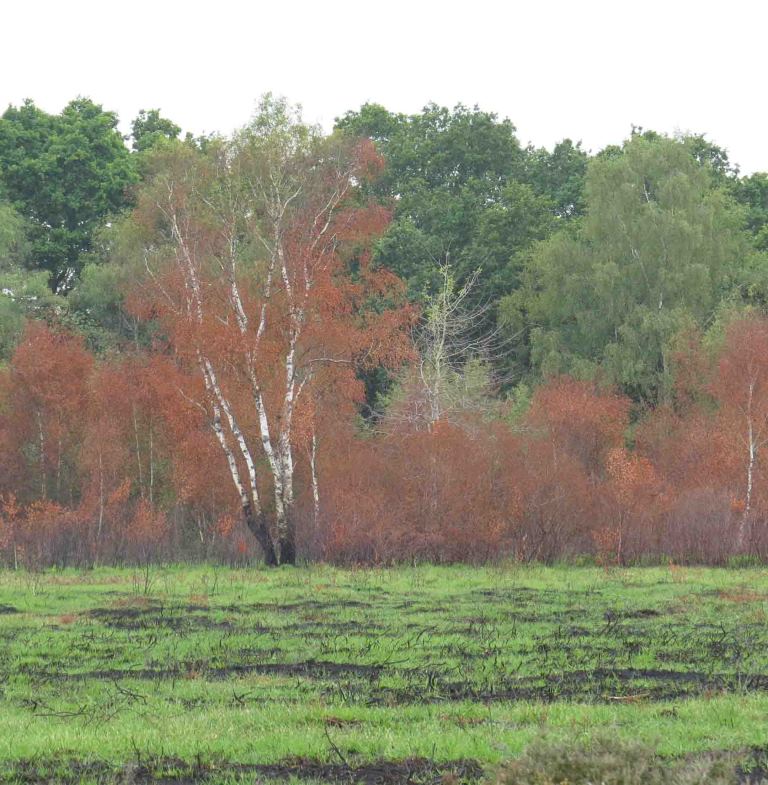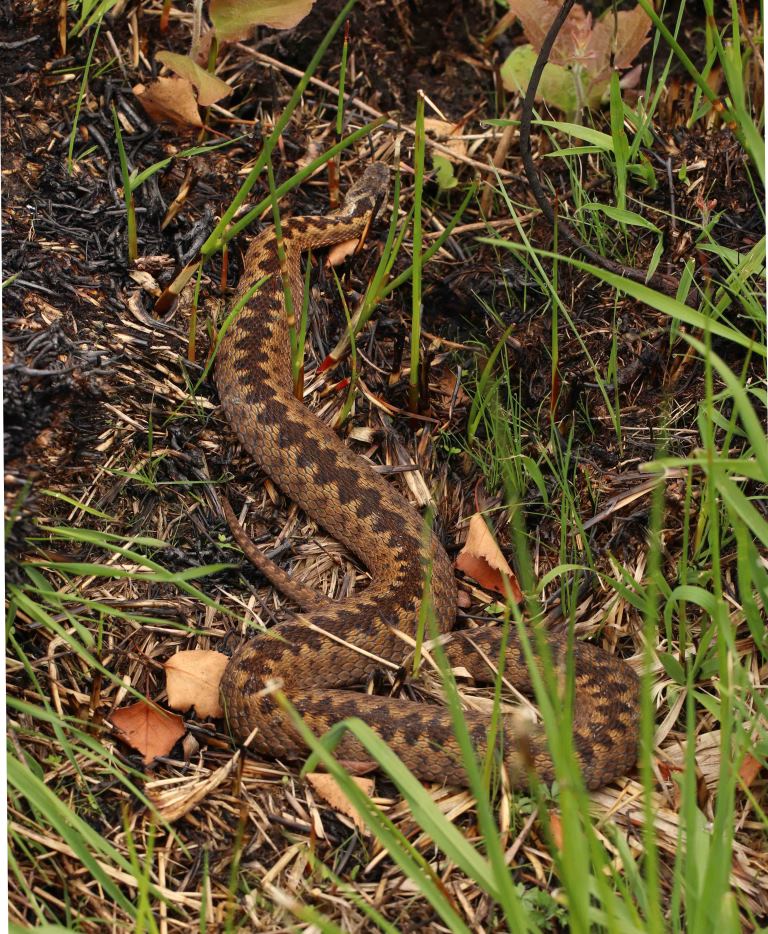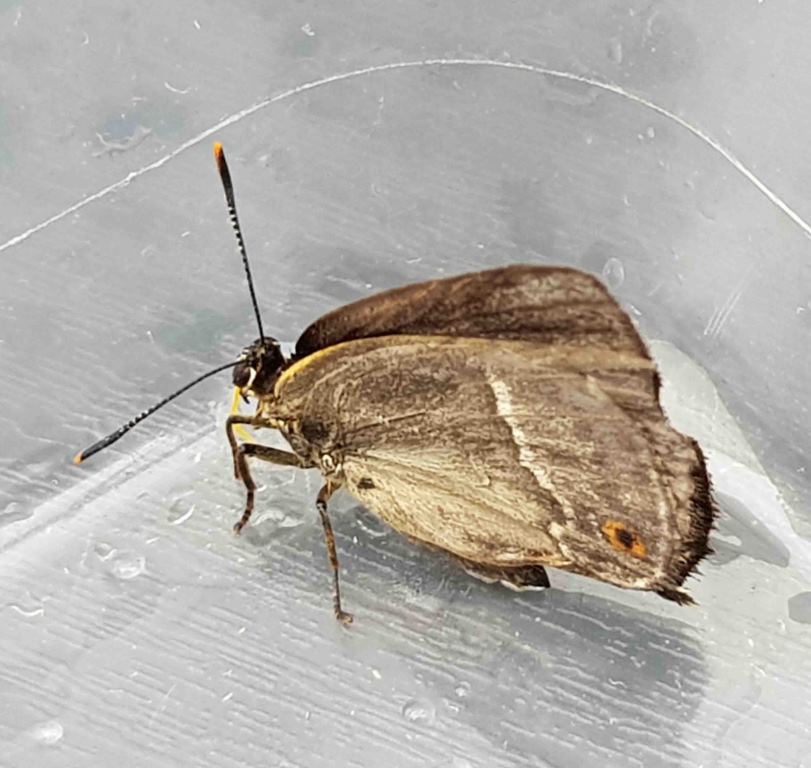Julia Cooper and Ian Duddle led a walk at Hazeley Heath near Hartley Wintney on Wednesday 19 June. It was a grey and humid morning, following several days of rain. The walk started from a housing estate on the south-east side of the site. First stop was a wet scrape, where about 10 plants of Oblong-leaved Sundew were found, together with clumps of Needle Spike-rush. A Tree Pipit was seen nearby. The route continued down a wooded stream valley at the edge of the open heathland. Several specimens of the brown fungus Tawny Grisette were found beside the path, an unusually early sighting. There were a number of Alder Buckthorn bushes in the woodland. A Stinkhorn was smelt but not seen. Common Valerian and big patches of Common Cow-wheat were flowering on the heathland edge. The next path crossed the open heathland. There were a number of funnel-shaped spiders’ webs down amongst the vegetation. Both Cross-leaved Heath and Bell Heather were in flower. Where the path crossed a small stream, there was a fine display of Heath Spotted-orchids. A Common Heath moth was seen here. About a month previously, on 23 May, there had been a serious fire on the eastern side of the site. It was good to see new leaves sprouting on blackened birch trees and fresh vegetation coming up from the burnt ground. On the uphill side of the charred board-walk, Meadow Thistle leaves were growing back well and a single plant was already flowering. Higher up the slope, there was another big patch of Heath Spotted-orchids. Best of all, a large female Adder was seen, slithering in the channel between clumps of burnt grass. The route continued through woodland. There was a fine display of Foxgloves in a clearing to one side of the path, with a significant proportion of white flower spikes amongst the more usual pink ones. The track ran alongside the old boundary bank where there were some magnificent old multi-stemmed Beech trees.
The RSPB owns the northern part of Hazeley Heath, and the next path ran through a section where they are actively managing the Gorse, with different age structures and mown pathways. A Dartford Warbler gave a brief snatch of song from deep in the Gorse, Linnets were active and an Emperor Dragonfly flew to and fro. Two adult Fallow Deer and a fawn moved off through the Gorse. Heath Bedstraw, Heath Speedwell, Heath Milkwort and Lousewort were in flower on the pathway, and there were tangles of the parasitic red-stemmed Dodder on mown Gorse. A number of Silver-studded Blue butterflies were seen on the Heather, mostly blue males but also one or two brown females. The return track ran along the woodland edge on the south-west side of the heath. Ragged Robin was flowering in damper patches and a Broad-leaved Helleborine plant was found next to the path. A robust brown fungus with flecks of veil on its cap was identified as Amanita excelsa var. spissa. A big shallow pond on the heathland edge had submerged feathery leaves of Floating Club-rush, while in the middle were a few leaves of Water-plantain. The final part of the walk was across an area where there had previously been gravel extraction, followed by a municipal rubbish dump. Goat’s-rue, with pale purple flowers, was seen here. Further on, a Bee Orchid and 3 Pyramidal Orchids were spotted beside the track. The walk was followed by lunch at the Shoulder of Mutton pub, where a Purple Hairstreak butterfly on the inside of a window came as a surprise addition to the morning’s species tally.
Pictures by Fiona Brown, Sue White and Laurie Haseler

